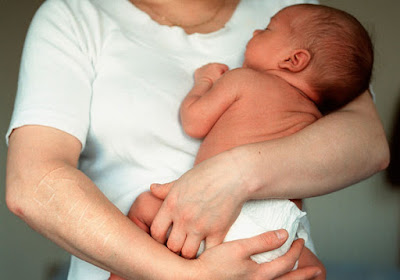What is reactive attachment disorder ?
Reactive attachment disorder is a mental disorder that is classified in the DSM-IV to developmental disorders. The disease develops in the first five years of life. The DSM-IV distinguishes braked (watchful, cautious) and disinhibited type (nondiscrimination). In the ICD-10 disinhibited type is described separately.
Reactive attachment disorder symptoms
Children suffering from this disorder fail to emotionally attach themselves in an appropriate manner to their parents or others caring for them. The cause may lie in neglect (affective, emotional or refrain from physical basic needs) or abuse (mentally or physically), but can also occur if the child gets sufficient opportunity to form emotional ties, such as getting regular other caregivers.
Emotional relationships are shorter and shallower than normal. The child behaves overly vigilant, refusing overtures from caregivers, opposes console and games and can become socially isolated. The child always feels rejected and unwelcome, often behaves unpredictably and behaves contradictory; the child has a persistent state of stress and helplessness and response will show this seriously disturbed emotions and behaviors.
When older, the child often makes little distinction between familiar and unfamiliar people. Usually the child is known as 'everyone's friend' because it has no normal affection and boundless in forging relationships and friendships. The child demands attention and set itself on affectionate. Occasionally there will be an excessively strong binding, even at relatively unknowns. The child is reduced sensitivity to punishment or attempts to correct the behavior.
DSM-IV criteria
A) In most situations remarkably disturbed and not to develop appropriate social relationships, acting for the 5th year and clearly visible:
- a continuing failure to set social interactions in a manner appropriate to the age or to respond to it, as evidenced by excessive disinhibited / overalerte or very ambivalent and contradictory responses;
- a lack of clear linkages, as evidenced by an inability to make a distinction of persons in social relations, with a clear inability to respond appropriately to these different people.
C) There should be traces of early childhood neglect:
- continued disregard for basic emotional needs (nurturing, consolation, encouragement of the small child);
- neglect of basic physical needs (care, nutrition);
- repeated changing of base caregivers, so that no stable sutures were possible.
Reactive attachment disorder should not be confused with "attachment disorder" or insecure attachment. The reactive attachment disorder is a clinically to diagnose mental illness in contrast to an attachment disorder and insecure attachment, with regard to dome psychological terms.
Course
The severity and duration of the condition is dependent on a number of factors, but generally occurs a strong improvement on when the child is placed in a safe and nurturing environment. However, the reactive attachment disorder is susceptible to co-morbidity. Thus, growth, learning, and eating disorders (eg, pica or rumination syndrome) may develop.
The child of the brake type has a greater likelihood of depression, loneliness and addictions. The child of the disinhibited type is easily influenced and therefore tends to criminal activities and contacts. As a result of additional learning difficulties the child drops sometimes to the lowest forms of education. There may also be anxiety or behavioral disorders occur.
Older children or young people with reactive attachment disorder also often tend to remain excessive familiarity with strangers and sometimes even do not succeed in forging healthy emotional relationships resulting in a sense of loss or deprivation. In the case of growth disorders sometimes occurs an accelerated ripening, a too early or late - but short growth spurt - and a (too) early or late onset of puberty. In some cases, the puberty does not occur.
Risk and severity
Reactive attachment disorder is a serious disorder in which the attachment behavior remains severely disrupted, despite the child in a safe environment is placed and no it`s reactive attachment disorder is - see course -. Reactive attachment disorder is seen mainly in:
- children in foster care or children from an orphanage;
- (sometimes older) adoptive children whose history is unknown;
- children (from childhood) were victims of one or more forms of child abuse;
- children with a problematic pregnancy (incubator, oxygen deficiency);
- children of parents with psychological, or addiction problems.
- the duration of the child;
- the age at which it started and where it stops;
- the quality of a replacement attachment figure;
- the character of the child and support of the environment;
- if incubator, the extent to which the parent (s) remains in question.

